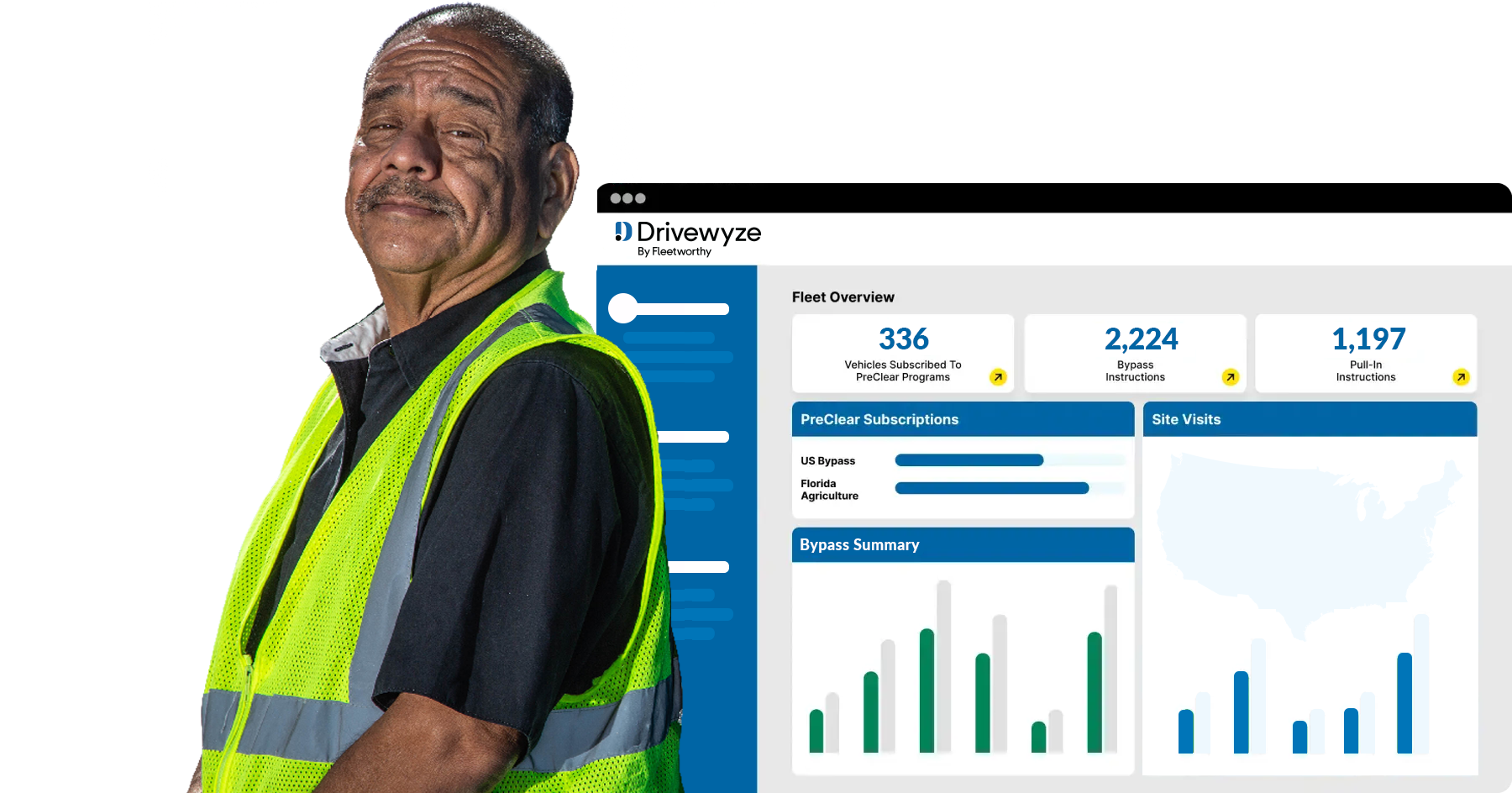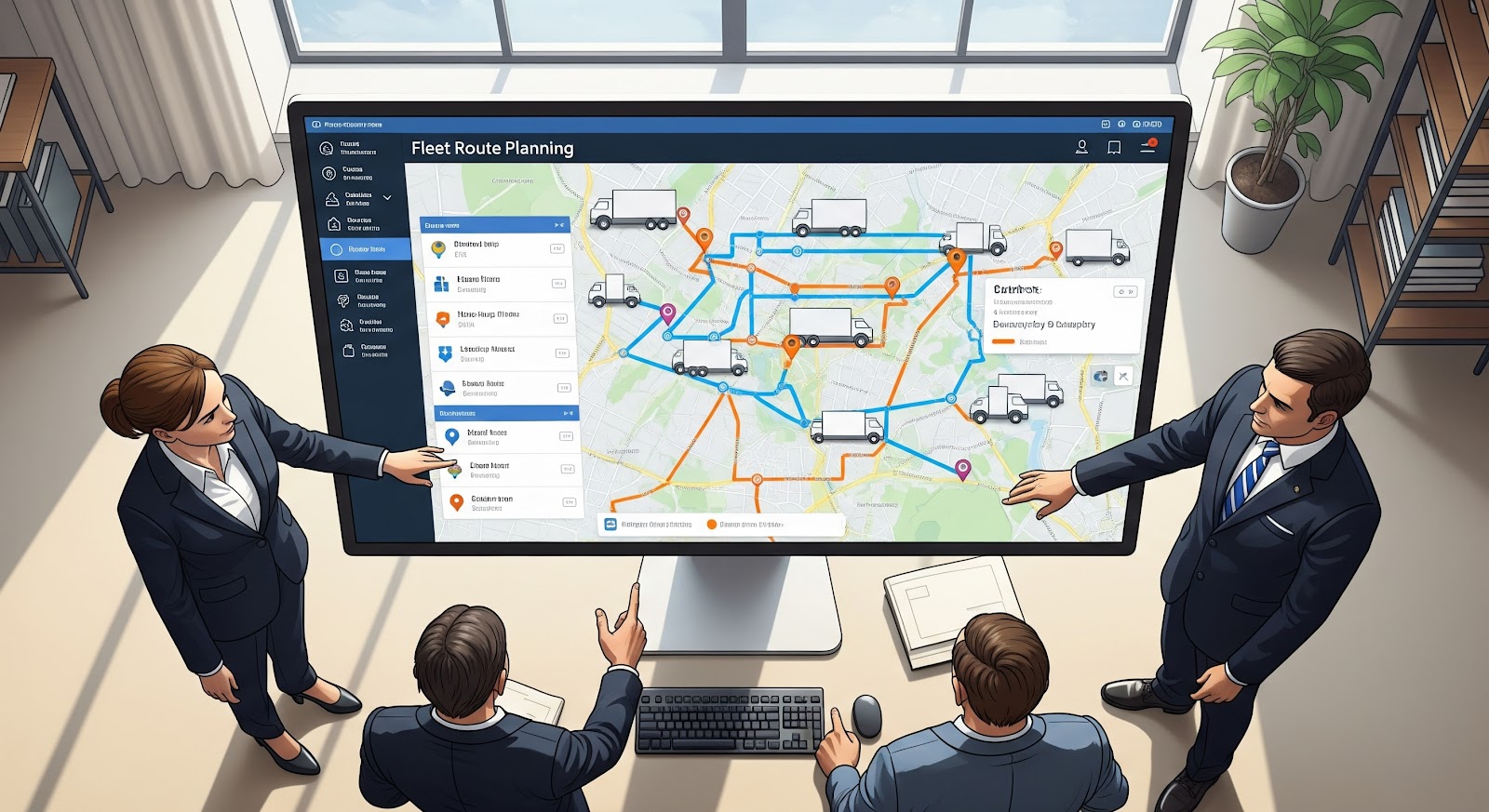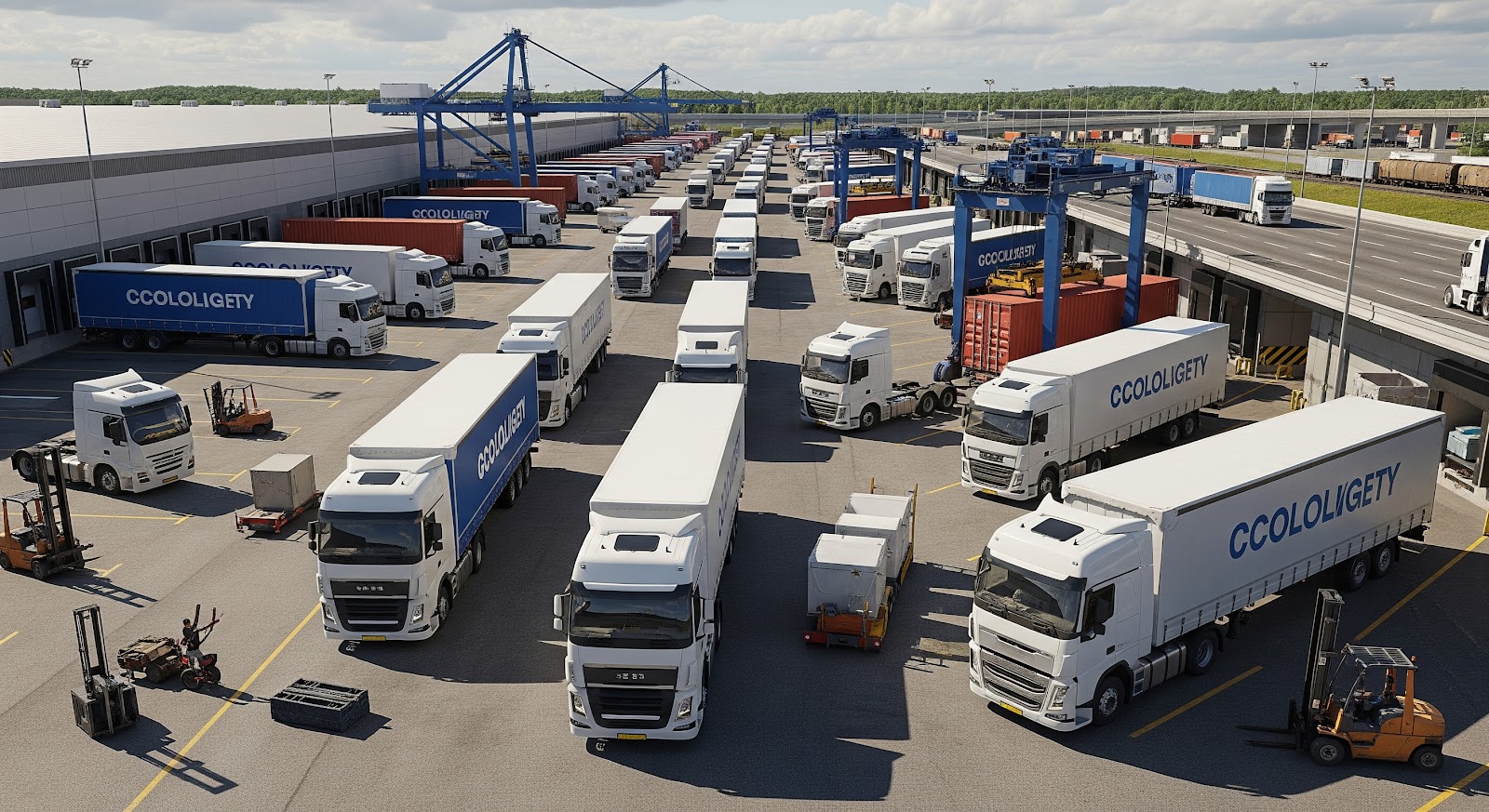In the margin-tight trucking industry, efficiency isn’t just a competitive advantage—it’s a necessity. From unpredictable weather and traffic congestion to rising fuel costs and increased regulatory scrutiny, fleets face a complex web of challenges on every route. At the same time, driver satisfaction and safety remain top priorities, requiring fleets to find smarter ways to manage time, risk, and resources.
This is where fleet route planning becomes a foundational strategy. When done right, it moves beyond simple GPS navigation and into the realm of predictive, data-informed decision-making. It empowers fleets to optimize their operations—from dispatch to delivery—while improving compliance, reducing unnecessary stops, and avoiding high-risk or high-cost routes. In short, it’s the link between day-to-day operations and long-term performance gains.
In this article, we’ll explore how intelligent fleet route planning not only enhances safety and fuel efficiency, but also drives significant improvements in operational output, driver productivity, and customer satisfaction. Whether you’re managing a small regional fleet or a national operation, better routing is the key to staying agile, compliant, and profitable in an increasingly dynamic transportation landscape.
What Is Fleet Route Planning?
Fleet route planning is the process of determining the most efficient, safe, and cost-effective routes for commercial vehicles to follow—taking into account a wide range of dynamic factors that impact a driver’s journey. It’s not just about choosing the shortest path from Point A to Point B; it’s about creating a strategy that optimizes time, fuel use, compliance, and safety across an entire fleet.
Effective route planning considers:
- Distance and travel time
- Traffic congestion and road conditions
- Weather patterns
- Weigh station locations and inspection likelihood
- Bridge heights, road restrictions, and hazardous materials routing
- Driver Hours of Service (HOS) limits and rest break scheduling
To manage all these variables in real time, modern fleets rely heavily on technology. Advanced route planning leverages data from:
- ELDs (Electronic Logging Devices) – to monitor driver availability and ensure HOS compliance
- GPS and mapping platforms – for navigation and real-time rerouting
- Traffic and weather data feeds – for adaptive routing during congestion or severe conditions
- Weigh station bypass systems – like Drivewyze PreClear, which help drivers avoid unnecessary delays at inspection sites
- Telematics platforms – to track vehicle performance and location while integrating routing and safety data
By using tools such as fleet management software, dispatch optimization systems, and Drivewyze’s safety and compliance ecosystem, fleet managers can automate decision-making, streamline operations, and provide drivers with up-to-date, contextual information en route.
Ultimately, fleet route planning is both a tactical and strategic function—impacting everything from fuel spend to on-time delivery rates. When supported by the right technologies, it becomes a powerful lever for improving both efficiency and driver experience.
Operational Challenges Solved by Smart Route Planning
Fleets today are navigating a minefield of operational pressures—tight schedules, high fuel costs, increasing regulatory demands, and rising customer expectations. Smart fleet route planning acts as a buffer against these daily disruptions, enabling fleets to operate more predictably, efficiently, and safely. Here’s how:
Time Waste & Delays
One of the most immediate gains from intelligent route planning is the ability to avoid preventable delays. Congestion, road closures, and construction zones can eat up valuable drive time and throw delivery schedules off track. Real-time routing data allows dispatchers and drivers to dynamically reroute around slowdowns and bottlenecks—keeping loads moving and schedules intact. With integrated solutions like Drivewyze Safety+ providing in-cab alerts about upcoming slowdowns, road work, and high-risk curves, fleets can proactively minimize downtime and increase daily productivity.
Fuel Inefficiency
Fuel is one of the largest variable costs in fleet operations. Without optimized routes, trucks may take longer, less direct paths or spend excessive time idling in traffic. Smart route planning reduces unnecessary mileage and identifies opportunities for more fuel-efficient travel. When paired with weigh station bypass services like Drivewyze PreClear, drivers avoid long waits at inspection sites—cutting idle time, reducing fuel waste, and improving route fluidity.
Compliance Risks
Hours of Service (HOS) compliance is non-negotiable. Poor planning can force drivers into difficult decisions when they’re approaching their HOS limits with no legal or safe place to park. Smart routing solutions factor in HOS constraints and break requirements, helping fleets plan routes that align with legal drive time. Drivewyze Central Park, for example, helps drivers locate real-time truck parking availability—preventing violations while reducing stress and improving safety.
Additionally, smart routing avoids areas known for higher inspection frequency or crash risk. With Drivewyze’s real-time alerts and data-driven safety insights, fleets can route around high-risk corridors and proactively support driver decision-making.
Costly Detentions & Missed Windows
Late arrivals can lead to detention fees, strained customer relationships, and cascading delays across your fleet’s schedule. Smart route planning gives dispatchers a clearer picture of delivery windows and potential disruptions ahead. It also enables tighter coordination with shippers and receivers to ensure arrival within appointment windows.
By reducing the likelihood of missed ETAs, route optimization supports better on-time performance, lowers accessorial charges, and contributes to stronger service-level reliability—especially important for time-sensitive sectors like food & beverage, retail, and just-in-time manufacturing.
Together, these benefits show that smart route planning isn’t just a backend logistics improvement—it’s a high-impact operational tool that directly affects fleet cost structure, compliance posture, driver satisfaction, and bottom-line performance.
How Fleet Route Planning Improves Efficiency
Smart fleet route planning isn’t just about getting from one location to another—it’s about optimizing every mile, minute, and movement to maximize performance and reduce friction. With the right tools and data in place, route planning becomes a force multiplier across your entire operation. Here’s how it drives meaningful efficiency gains:
Optimized Resource Use
Effective route planning ensures fleets make the best possible use of their most critical assets: drivers, vehicles, and fuel. By minimizing route overlap, reducing empty miles, and sequencing deliveries more efficiently, fleets can boost productivity without increasing operational load.
- Driver time is optimized through better scheduling, reduced waiting, and HOS-aware routing.
- Vehicle utilization increases as trucks spend less time idling or off-route.
- Fuel costs decrease as routes are shortened, congestion is avoided, and weigh station delays are reduced.
When you combine this level of precision with integrated technologies like telematics and ELD data, fleets gain tighter control over how resources are deployed and maintained—resulting in leaner operations and stronger ROI.
Faster Delivery Times
Accurate, consistent delivery performance is essential for retaining customers and avoiding penalties. Smart routing helps reduce delivery times by choosing paths that account for current road conditions, traffic patterns, and stop requirements.
With better ETAs and fewer unplanned stops, dispatchers can schedule more precisely, drivers experience less stress, and customers receive loads when expected. This level of predictability improves fleet reputation and service reliability—key differentiators in a competitive logistics environment.
Improved Safety = Less Downtime
Safety and efficiency are deeply connected. Avoiding high-risk road segments and proactively preparing drivers for upcoming hazards can drastically reduce crash risk—and the costly downtime that comes with it.
Drivewyze Safety+ plays a key role here, providing in-cab, location-based safety alerts for things like sharp curves, steep grades, sudden slowdowns, and high-collision corridors. These alerts increase driver awareness in critical moments, helping prevent accidents before they happen.
With fewer incidents and violations, fleets see:
- Lower insurance costs
- Reduced vehicle downtime
- Higher driver confidence and retention
In short, safe routing is efficient routing.
Weigh Station Bypass Benefits
Weigh stations can be a major source of delay. With Drivewyze PreClear, fleets can bypass hundreds of inspection sites across North America without stopping—saving time, fuel, and reducing wear and tear on both trucks and drivers.
By integrating weigh station bypass into your routing strategy:
- Drivers stay on schedule with fewer unexpected delays.
- Fuel is conserved by avoiding long idle periods.
- Delivery times improve, especially across high-frequency weigh station corridors.
This not only enhances route efficiency—it also improves morale by keeping drivers moving and reducing frustration from unnecessary inspections.
Together, these benefits prove that strategic fleet route planning—especially when enhanced by tools like Drivewyze PreClear and Safety+—is essential for fleets that want to do more with less, while keeping drivers safe and customers happy.
The Role of Real-Time Data in Route Planning
In the past, route planning relied heavily on static maps and historical traffic patterns—offering a best-guess view of how a trip might unfold. But in today’s dynamic operating environment, static routing simply isn’t enough. Delays caused by traffic congestion, severe weather, road closures, or unexpected weigh station queues can turn even the most well-planned routes into logistical headaches.
To stay competitive and compliant, modern fleets need real-time, context-aware routing that evolves with conditions on the road.
Why Static Routing Falls Short
Traditional routing methods can’t respond to:
- Sudden slowdowns due to accidents or bottlenecks
- Weather-related hazards like snow, fog, or flooding
- Last-minute construction detours or road restrictions
- Unexpected inspection delays at weigh stations
When routes can’t adapt, drivers are left vulnerable to missed appointments, HOS violations, safety risks, and rising fuel costs.
Real-Time Inputs That Drive Smart Routing
Smart route planning is powered by live, streaming data that reflects what’s happening now, not what happened last week. This includes:
- Traffic congestion and incident reports
- Severe weather conditions
- Construction updates and detour alerts
- Inspection site activity
- Location-based safety hazard warnings
By layering these real-time insights into routing decisions, fleets can avoid disruptions before they occur—keeping deliveries on time and drivers out of harm’s way.
How Drivewyze Enhances Real-Time Planning
Drivewyze’s ecosystem plays a vital role in elevating real-time routing strategy:
- Smart Roadways uses geospatial intelligence to highlight high-risk corridors and send in-cab alerts before drivers enter danger zones. This enables planners to route around safety hotspots or coach drivers to prepare for them.
- Drivewyze e-Inspection reduces dwell time at weigh stations by enabling expedited inspections—keeping trucks rolling even when stops are unavoidable. Combined with PreClear, it offers an adaptive compliance edge that can be factored directly into routing decisions.
Together, these solutions empower fleets to make smarter, faster, and safer routing choices—based on up-to-the-minute conditions, not assumptions.
Real-time data isn’t just a convenience—it’s a critical input for operational excellence. Fleets that integrate Drivewyze’s real-time tools into their route planning workflows unlock greater visibility, agility, and control across every mile.

Ready to Get Started?
Learn how North America’s leading carriers use Drivewyze to save money and improve safety.





